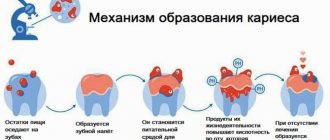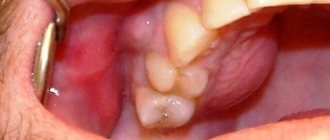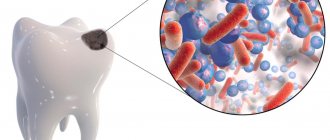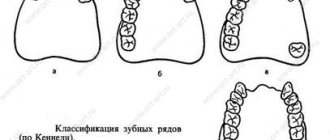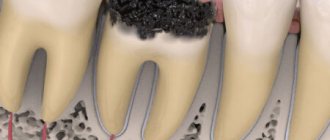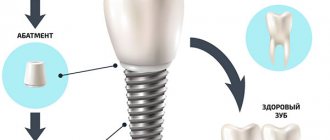The loss of a front tooth is very acute. And this is not surprising. Even if there is a slight darkening of the enamel on the front incisors, the person already begins to feel uncomfortable - he is embarrassed to talk and smile. And the absence of even one tooth along the smile line only aggravates psychological discomfort. Therefore, such problems need to be solved as quickly as possible.
Prosthetics for anterior teeth
are primarily aimed at high aesthetics. Therefore, they use materials that effectively combine strength and high aesthetic characteristics. The Ilatan Clinic in Moscow uses various methods for restoring front teeth using advanced technologies and the latest generation materials. Treatment methods and cost depend on the clinical picture.
Problems arising from missing teeth
The absence of even one dental unit in a row leads to serious consequences:
- Due to the lack of lateral support, neighboring teeth begin to shift;
- if a tooth is lost along with the root, the bone tissue in this area begins to quickly atrophy and decrease;
- chewing function is impaired, which leads to problems with the gastrointestinal tract;
- the bite changes, which leads to deformation of the position of the jaw joint and dysfunction of the umbilical nervous system;
- The shape of the face changes, the upper lip begins to recede, and wrinkles appear.
The longer a tooth is missing, the more severe the consequences will be. If a tooth is lost in the smile area, patients are offered different options for restoring the dentition. The method depends on the clinical picture.
What does prolonged absence of teeth lead to?
If you have lost a tooth, we recommend that you do not delay replacing it for a long time. In addition to an aesthetic defect, long-term absence of a tooth can lead to a number of negative consequences, which not everyone knows about. We will talk about the main problems that can be encountered if the integrity of the dentition is not restored.
Change in appearance
The dentition is a single, well-coordinated mechanism that functions fully only if it is intact. The load when biting and chewing food is distributed evenly both on the teeth and on the periodontal tissue (which surrounds and holds the tooth).
In addition to the chewing function, the preservation of the dentition affects a person’s diction and appearance. If front teeth are missing, lip recession may develop, the loss of canine teeth can change the smile, and the removal of chewing teeth can change the line of the cheeks. Soft tissues remain without support, the proportions of the face change, the corners of the mouth sag down and nasolabial folds appear. The motility of small facial muscles changes, exacerbating existing wrinkles and contributing to the appearance of new wrinkles.
Increased load on other teeth
Each group of teeth performs its own function, and when the chewing teeth are lost, the front teeth take over their function, but their anatomical structure does not correspond to the load placed on them. This leads to abrasion of the edges of the tooth, the appearance of cracks and darkening on the enamel. The height of the bone tissue that holds the tooth decreases, and over time, teeth that are under excessive load acquire pathological mobility, in other words, they begin to loosen.
Tooth displacement and the occurrence of functional disorders
After a tooth is removed, its antagonist (the tooth of the opposite jaw, with which it comes into contact during chewing) loses support and moves. The same thing happens with neighboring teeth on both sides of the removed one. This leads to the formation of malocclusion, uneven dentition and disorders in the jaw joints, which can lead to arthrosis. Patients develop functional gastrointestinal disorders: gastritis, pancreatitis, cholecystitis.
Bone loss
3–5 months after tooth extraction, the bone tissue that previously supported the tooth and could become a support for the implant begins to decrease, which is due to the lack of the previous chewing load. For example, a similar situation occurs with muscles after applying plaster. The longer a patient waits to see a dentist after tooth extraction, the more pronounced the bone deficiency becomes, and the more difficult the implantation procedure will be in the future.
Fortunately, modern technologies make it possible to restore the dentition even with complete loss of teeth and bone tissue atrophy, but the sooner the patient consults a doctor, the easier and cheaper it will be.
The possibilities of modern dental restoration techniques, fortunately, are practically unlimited: implant-supported crowns, orthopedic bridges and removable dentures. MedGarant specialists will always be able to offer the best option for you. Make an appointment and your doctor will create an individual treatment plan for you.
Make an appointment with a doctor by calling:
- Clinic on the street. Smolenskaya, 9
+7 Make an appointment
- Clinic on the street. Badaeva, 6, building 1
+7 Make an appointment
- Clinic on Menedeleev Blvd., 9, building 1
+7 Make an appointment
Aesthetic restoration of anterior teeth
If you need to correct the appearance and shape of incisors or fangs, the best solution is ultra-thin veneers or lumineers. Plates 0.2 - 0.3 mm thick made of ceramic or zirconium are fixed to the outside of the teeth, eliminating all visual defects, making the smile luxurious. Such microprostheses do not require significant intervention in the structure of the teeth. The enamel is prepared exactly to the thickness of the plate, and the veneers are fixed to the surface of the teeth using a special glue (bond). Typically, veneers are installed on 6-10 upper and 4-6 lower teeth along the smile line.
Don’t delay with dental prosthetics
Whatever the reason for delaying prosthetics, we urge you :
Don't miss the opportunity to live a healthy and fulfilling life!
Sign up for a consultation with an orthopedic dentist by phone or on the website >>
Share the link:
- Click here to share content on Facebook. (Opens in a new window)
- Click to share on WhatsApp (Opens in new window)
implantation, orthopedics, articles, surgery topics: bone atrophy, implantation, bone grafting, fixed prosthetics, covering prostheses, prosthetics, prosthetics on implants, removable prosthetics
If the front tooth is destroyed, but the root is preserved
In case of significant destruction of the coronal part (up to 50%), the front tooth can be restored using prosthetic crown. The affected tooth is depulped, followed by filling the canals, given the desired shape (prepared), if necessary, the root is strengthened with a stump insert. The crown is fixed onto the prepared stump using dental cement.
For the smile area, it is better to choose all-ceramic or metal-free crowns made of zirconium or aluminum oxide. These materials have a shade and degree of transparency similar to natural enamel. The doctor will select an option so that the restored tooth does not stand out in any way in the general row.
FAQ
Dental restoration is a very broad area in dentistry, with a special approach to each case. Therefore, patients often have various questions, the most common of which are:
- How much does it cost to insert a front tooth? Depending on the method, materials, additional treatment and many other features, the cost can vary greatly. You need to come to the clinic, where a specialist will answer any of your questions: how much does it cost to insert a pin and build up a tooth; At what age can teeth be inserted? how much does it cost to insert a chewing tooth?
- Is it possible to insert a tooth if there is no root? It is possible, the dentist may recommend implantation, a bridge, or a removable denture.
- What types of implantation exist? Today, single-stage, one- and two-stage implantation is used.
- The tooth was removed. How long after can teeth be inserted? It all depends on the individual characteristics of the patient. The defect can be fixed in one day, but sometimes you will need to wait several months.
- How much does it cost to get a dental implant? The cost of dental implantation is from 25,000 rubles.
- Where is the best place to insert teeth? Preference should be given to certified clinics that employ experienced dentists and have all the necessary equipment for diagnosis and treatment, as well as high-quality materials.
- Does it hurt to insert a pin into a tooth? Modern painkillers can completely eliminate pain and discomfort.
- How to insert teeth without grinding down the adjacent ones? You can insert one tooth without grinding the adjacent teeth using a removable denture, implant or pin.
- How much does it cost to insert a metal-ceramic tooth? The cost of one unit of metal-ceramic crown starts from 8,000 rubles.
If you have additional questions, you can always ask them to an experienced dentist and get a competent answer.
How to choose an implant brand?
With complete absence of a tooth
Prosthetics for front teeth in the absence of them involves 2 main methods:
- Installation of a bridge prosthesis
- this method is suitable for replacing 1 to 4 missing incisors. A bridge is a structure of several connected crowns, 1-2 suspended in the center and 2 hollow on the sides, which are attached to adjacent supporting teeth. The main disadvantage of the method is the need to grind and often depulpate the supporting units, even if they are completely healthy. That is, if you need to restore 1 missing incisor, two adjacent ones will have to be injured. - Implant prosthetics
– technology allows you to restore any number of missing teeth in a row. An implant is implanted into the jawbone, which fully replaces the missing tooth root. After the implant has healed, an adapter (abutment) is installed on it, onto which an artificial crown is fixed, identical in shape and color to the natural tooth. If an entire segment of the dentition is missing (3 or more teeth), 2 artificial roots are implanted, onto which a bridge is fixed. - Prosthetics of the front tooth immediately after extraction
is performed using the express implantation method. Immediately after surgical removal of a tooth, an implant is screwed into its socket, an abutment and a temporary crown made of lightweight plastic are fixed onto it. The temporary crown is removed from the bite, does not take part in chewing, it is necessary only to preserve the aesthetics of the smile. After 2-3 months, when the implant has fused with the bone, the temporary prosthesis will be replaced with a permanent one made of durable, reliable material (metal-ceramics, zirconium, etc.).
Prosthetics on implants does not involve injury to neighboring units; implanted implants perform all the functions of a natural tooth root and prevent jawbone atrophy. Implants are implanted once and for all; only prosthetic structures are subject to replacement (if they break or end their service life).
Reason 4 – the longer teeth are missing, the more difficult it is to restore them
Patients who decide to have a tooth inserted after a long absence often face a certain problem.
Due to insufficient chewing load, the bone tissue atrophies over time and its volume becomes insufficient to install an implant. In such cases, it is necessary to use traumatic and expensive bone grafting techniques (sinus lifting, splitting of the alveolar ridge, etc.). The time spent on tooth restoration will also increase. When can teeth be inserted after extraction? It all depends on the specific case, the possible options for inserting teeth. Sometimes the defect can be restored in a very short time, but in some cases it will take longer - up to six months.
Is it difficult to get used to dentures?
The process of adaptation occurs almost imperceptibly if the orthopedic design is as close as possible in shape and size to the lost natural tooth. For example, classic artificial crowns, bridges or dentures on implants do not cause discomfort after installation - especially if the tooth was lost recently. It takes several weeks to get used to removable “butterflies”, because... artificial gums and clasps seem foreign. To speed up adaptation, you can recite tongue twisters, read poems, and stories out loud.
“I very quickly got used to my metal-ceramic crown. She just fit in perfectly. And there were no unpleasant sensations at all. On the contrary, I was getting used to the fact that I was finally comfortable chewing and it didn’t hurt. You can say that I got used to the feeling of happiness, that everything is normal in my mouth now.”
Tatiana S., review from gidpozubam.ru
What designs are best used to restore several teeth?
If two or three units are missing, it is optimal to replace them with the same number of crowns on implants. But in order to save money, you can also install a dental bridge. To fix it, it is also better to use titanium rods rather than abutment teeth. In this case, it is enough to install only two implants and make the middle crown cantilever. The most aesthetic and durable material for such prosthetics is zirconium. But for the restoration of chewing teeth, more affordable metal-ceramics are also quite suitable.
